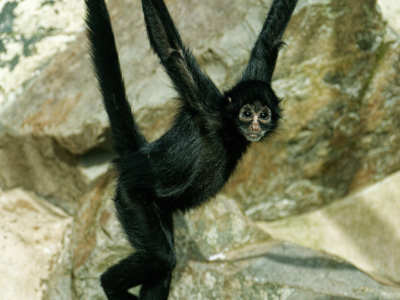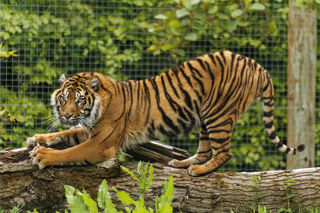
Black-headed spider monkey
Spider monkeys are so named due to their long, narrow limbs and long, prehensile (gripping) tail. Their tail is often longer than their body and can be up to 85cm long! There are two sub-species of black-headed spider monkey. A.f.robustus, the sub-species kept at Twycross, is completely black apart from a few white hairs around their chin.

Black-headed spider monkeys spend all their time up in the trees. Their forward facing eyes make them very good at judging distances and they can jump up to nine metres from branch to branch. They live in social groups of up to 20 individuals but are rarely all found in the same place at the same time. They prefer to travel in smaller sub-groups.
Female spider monkeys signal they are ready to mate by changes in behaviour and scent. A single infant is born and is cared for by the mother until the age of 20 months. Males will remain in the group for their whole life but females leave the group once mature.

The preferred diet for the black-headed spider monkey is fruit and leaves but they will also eat insects, seeds and, occasionally, eggs. The major threat to black-headed spider monkeys is habitat loss particularly for populations in Columbia. This has led to a decline in numbers and they are now classed as Critically Endangered by the IUCN. Even in protected national parks they are still threatened by illegal hunting for meat.
Key Facts:
Conservation Status: Vulnerable
Distribution: Colombia, Panama
Habitat: Tropical Forest
Diet: Fruit, Insects, Leaves, Seeds
Height: 40 – 55cm
Weight: 9kg
Gestation: 7.5 months
No. of young: 1
Life Span: 24 years

SUPPORT OUR ANIMALS
If you're looking for an alternative way to donate to Twycross Zoo, you can help support our animals and our zoo keepers by purchasing something from our Amazon Wishlist!
Updated regularly by our zoo keepers, the items on the list help to provide enrichment for our animals and keep their habitats well maintained.
Every donation helps us as a conservation charity.

